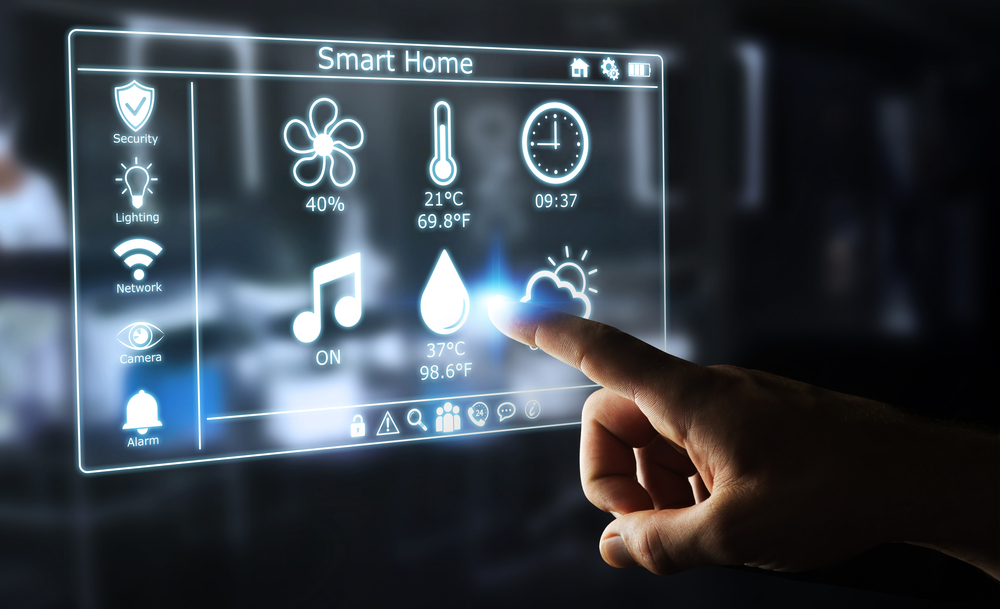Your smart home lighting system promises convenience and energy savings, but it might be creating unexpected consequences for your mental health. Those programmable LED bulbs that change color temperature throughout the day aren’t just affecting your electricity bill – they could be disrupting your circadian rhythm, altering your mood, and contributing to sleep problems in ways you never considered.
The relationship between artificial lighting and mental health is more complex than most people realize, and smart lighting systems add new variables to an equation that scientists are still trying to understand. Your brain responds to light cues in sophisticated ways that can either support or undermine your psychological wellbeing.
Circadian disruption happens easier than you think
Smart lighting systems often default to settings that prioritize visual comfort over biological needs. Many people program their lights to stay bright and cool-toned throughout the evening, not realizing this can suppress melatonin production and delay sleep onset by hours.
Your brain interprets blue-rich light as a signal that it’s daytime, regardless of what time the clock shows. When smart lights maintain high color temperatures after sunset, they’re essentially telling your brain to stay alert and awake. This confusion can persist even after you turn off the lights, making it difficult to fall asleep and achieve restorative sleep cycles.
The programmable nature of smart lights means these disruptions can become consistent and chronic. Unlike occasional exposure to bright screens or overhead lighting, smart lighting systems can create sustained circadian disruption that compounds over weeks and months, potentially contributing to mood disorders, anxiety, and cognitive problems.
Color temperature choices affect emotional responses
The color temperature of your lighting directly influences neurotransmitter production and emotional regulation. Cool, blue-rich light tends to increase cortisol and suppress serotonin production, potentially contributing to feelings of stress and anxiety. Warm, amber lighting has the opposite effect, promoting relaxation and emotional stability.
Many smart lighting users gravitate toward cooler, brighter settings because they appear more modern and energizing. However, spending too much time under these conditions can create a chronic state of physiological arousal that feels like low-level anxiety or restlessness.
The ability to change lighting instantly through smartphone apps can also create decision fatigue and obsessive behaviors around optimizing your environment. Some people become preoccupied with constantly adjusting their lighting, turning what should be a background environmental factor into a source of mental preoccupation.
Flicker rates and dimming create invisible stress
Smart LED lights often use pulse-width modulation for dimming, which creates imperceptible flicker that can still affect your nervous system. This invisible flicker can contribute to eyestrain, headaches, and general feelings of unease that people often can’t identify or explain.
The flicker rate of some smart bulbs falls within ranges that can trigger photosensitive responses in susceptible individuals, potentially contributing to anxiety, irritability, or even seizures in extreme cases. Unlike traditional incandescent bulbs that dim smoothly, many smart LEDs create choppy light output that your brain processes as subtle stress signals.
Inconsistent light output from aging or poorly manufactured smart bulbs can also create subconscious stress responses. When lighting quality varies unpredictably, your brain has to work harder to adapt to changing visual conditions, creating mental fatigue that accumulates throughout the day.
Social and behavioral impacts compound mental health effects
Smart lighting can alter social dynamics within households by creating individualized lighting preferences that fragment shared spaces. When family members each control different lights through their personal devices, it can reduce the cohesive environmental cues that help regulate group circadian rhythms and social bonding.
The technology can also create dependency behaviors where people feel unable to function comfortably without precise lighting control. This technological dependence can increase anxiety when systems malfunction or when people find themselves in environments without smart lighting capabilities.
Some individuals develop compulsive behaviors around monitoring and adjusting their smart lighting, checking apps frequently throughout the day to ensure optimal settings. This hypervigilance about environmental control can become a source of stress rather than comfort.
Optimizing smart lighting for better mental health
Use warmer color temperatures in the evening and cooler temperatures during the day to support natural circadian rhythms. Set your smart lights to automatically shift toward amber tones at least two hours before your intended bedtime, and avoid overriding these settings for screen time or work activities.
Choose smart bulbs with high-quality dimming capabilities that don’t rely heavily on pulse-width modulation. Look for bulbs that offer smooth dimming transitions and consistent light output to reduce invisible flicker that can contribute to mental fatigue.
Consider setting automatic schedules rather than manually controlling your lights throughout the day. This reduces decision fatigue and ensures consistent lighting patterns that support rather than disrupt your natural biological rhythms and mental health.














